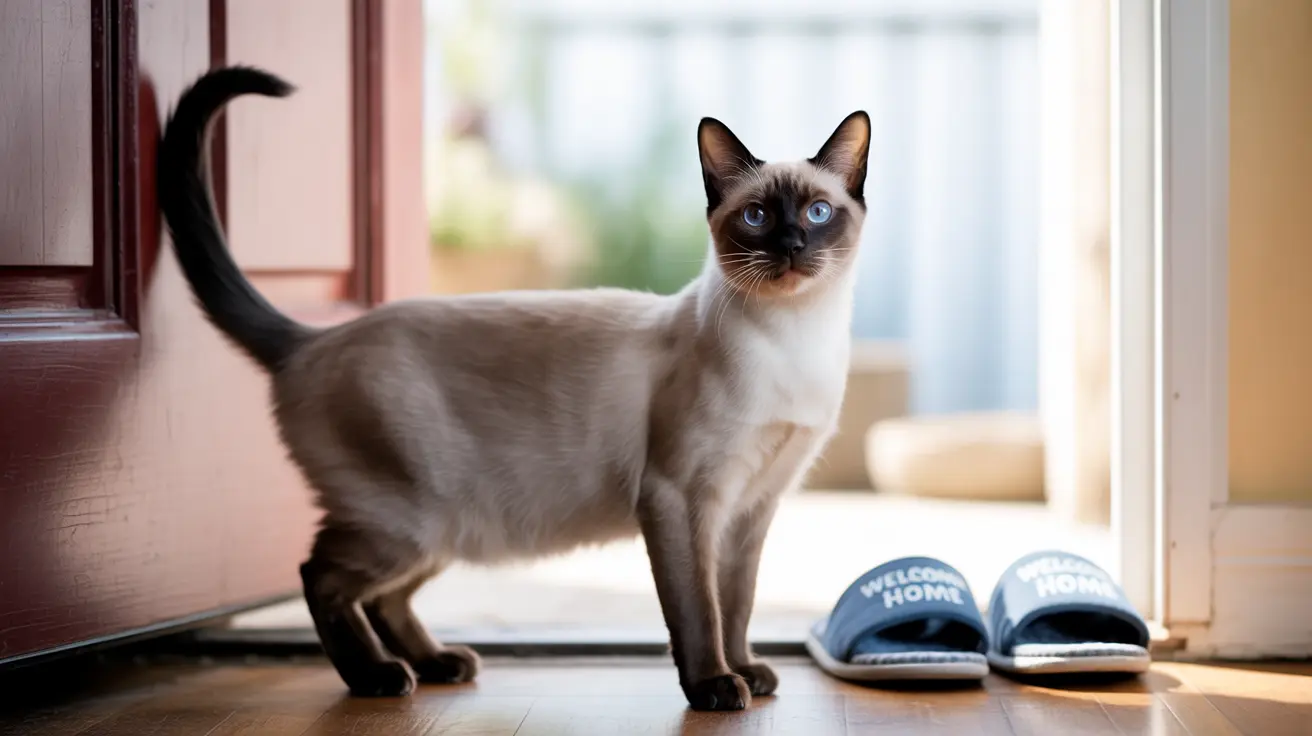Have you ever wondered what your cat is trying to tell you through their various meows? As complex communicators, cats have developed an extensive vocabulary of meows specifically for interacting with their human companions. Understanding these different types of meows can significantly enhance your relationship with your feline friend and help you better meet their needs.
In this comprehensive guide, we'll explore the fascinating world of cat vocalizations, decode the meanings behind different types of meows, and help you become fluent in your cat's unique language.
Common Cat Meow Types and Their Meanings
The Greeting Meow
Short, cheerful meows are typically used as friendly greetings. These brief vocalizations, often accompanied by an upright tail and forward-pointing ears, signal that your cat is happy to see you and wants to interact.
The Demanding Meow
Repetitive, medium-pitched meows usually indicate a request or demand. Whether your cat wants food, attention, or access to another room, these insistent vocalizations are their way of saying, "Hey, I need something right now!"
The Distress Signal
High-pitched or prolonged meows often communicate urgency or distress. These sounds might indicate pain, anxiety, or genuine need for immediate attention. It's essential to investigate these vocalizations promptly, especially if they're unusual for your cat.
Understanding Context and Timing
The meaning of your cat's meows often depends heavily on context. A morning meow might be a breakfast request, while the same sound in the evening could mean they want to play. Pay attention to:
- Time of day
- Location in the house
- Your cat's body language
- Recent changes in routine
- Environmental factors
Breed-Specific Vocalizations
Different cat breeds have varying propensities for vocalization. Siamese cats, for instance, are known for their loud, frequent communications, while Persian cats tend to be quieter. Understanding your cat's breed characteristics can help you better interpret their vocal patterns.
When to Be Concerned
While meowing is normal cat behavior, certain patterns might indicate underlying issues:
- Sudden increases in vocalization
- Changes in meow tone or intensity
- Excessive nighttime meowing
- Painful-sounding yowls
- Persistent, unusual vocalizations
Training and Response Strategies
How you respond to your cat's meows can reinforce or discourage certain behaviors. Consider these approaches:
- Reward quiet behavior
- Maintain consistent feeding schedules
- Provide regular play and attention
- Don't respond to excessive demanding meows
- Create a stimulating environment
Frequently Asked Questions
What are the different types of cat meows and what do they mean?
Cat meows range from short greeting chirps to long, demanding vocalizations. Short meows typically mean hello, while longer meows often indicate requests or demands. High-pitched meows might signal distress, while low-pitched meows can indicate displeasure or anger.
How can I tell if my cat's meow signals a request, distress, or happiness?
Consider the meow's pitch, duration, and context. Happy meows tend to be shorter and medium-pitched, while distress calls are usually louder and more urgent. Request meows are often repetitive and accompanied by specific body language like rubbing against you.
Why do some cats meow more loudly or frequently than others?
Vocalization levels vary based on breed, personality, and learned behavior. Some breeds, like Siamese cats, are naturally more talkative. Additionally, cats often develop different vocal patterns based on how effectively their meowing achieves desired responses from their humans.
How do kittens' meows differ from adult cat meows when communicating with humans?
Kittens typically have higher-pitched, more frequent meows designed to attract attention from their mother. As they mature, their vocalizations become more varied and sophisticated, developing into their adult "vocabulary" for human communication.
What should I do if my cat's meowing suddenly changes or becomes excessive?
Sudden changes in meowing patterns could indicate health issues or stress. First, ensure all basic needs are met (food, water, clean litter). If the behavior persists, consult your veterinarian to rule out medical conditions. Consider any recent environmental changes that might be causing stress.
Conclusion
Understanding your cat's different types of meows is key to being a responsive and attentive pet parent. By paying attention to the context, timing, and characteristics of their vocalizations, you can better meet their needs and strengthen your bond. Remember that each cat is unique, and taking the time to learn your particular pet's "language" will lead to more effective communication and a happier relationship.






